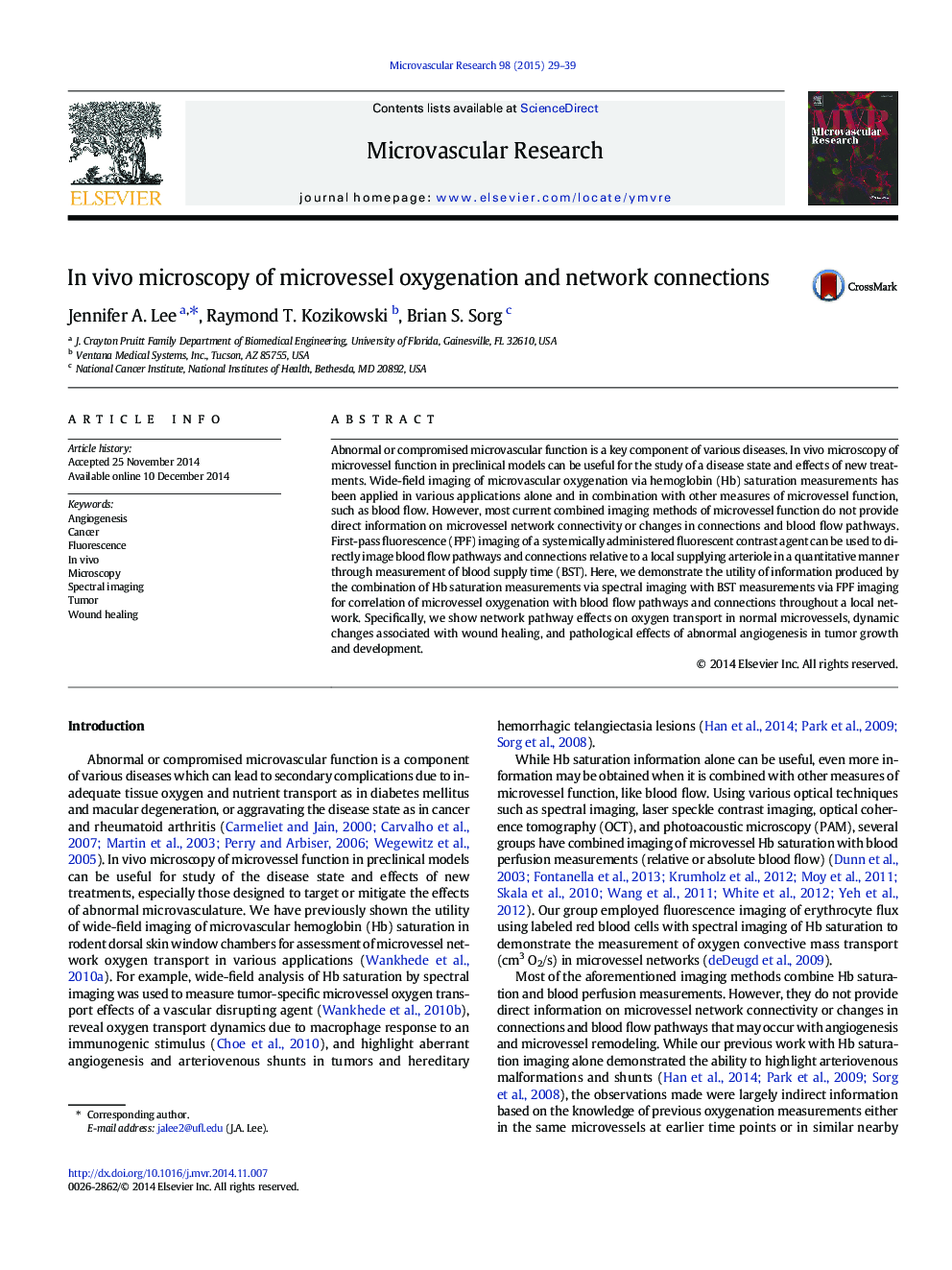| Article ID | Journal | Published Year | Pages | File Type |
|---|---|---|---|---|
| 1994812 | Microvascular Research | 2015 | 11 Pages |
Abstract
Abnormal or compromised microvascular function is a key component of various diseases. In vivo microscopy of microvessel function in preclinical models can be useful for the study of a disease state and effects of new treatments. Wide-field imaging of microvascular oxygenation via hemoglobin (Hb) saturation measurements has been applied in various applications alone and in combination with other measures of microvessel function, such as blood flow. However, most current combined imaging methods of microvessel function do not provide direct information on microvessel network connectivity or changes in connections and blood flow pathways. First-pass fluorescence (FPF) imaging of a systemically administered fluorescent contrast agent can be used to directly image blood flow pathways and connections relative to a local supplying arteriole in a quantitative manner through measurement of blood supply time (BST). Here, we demonstrate the utility of information produced by the combination of Hb saturation measurements via spectral imaging with BST measurements via FPF imaging for correlation of microvessel oxygenation with blood flow pathways and connections throughout a local network. Specifically, we show network pathway effects on oxygen transport in normal microvessels, dynamic changes associated with wound healing, and pathological effects of abnormal angiogenesis in tumor growth and development.
Related Topics
Life Sciences
Biochemistry, Genetics and Molecular Biology
Biochemistry
Authors
Jennifer A. Lee, Raymond T. Kozikowski, Brian S. Sorg,
